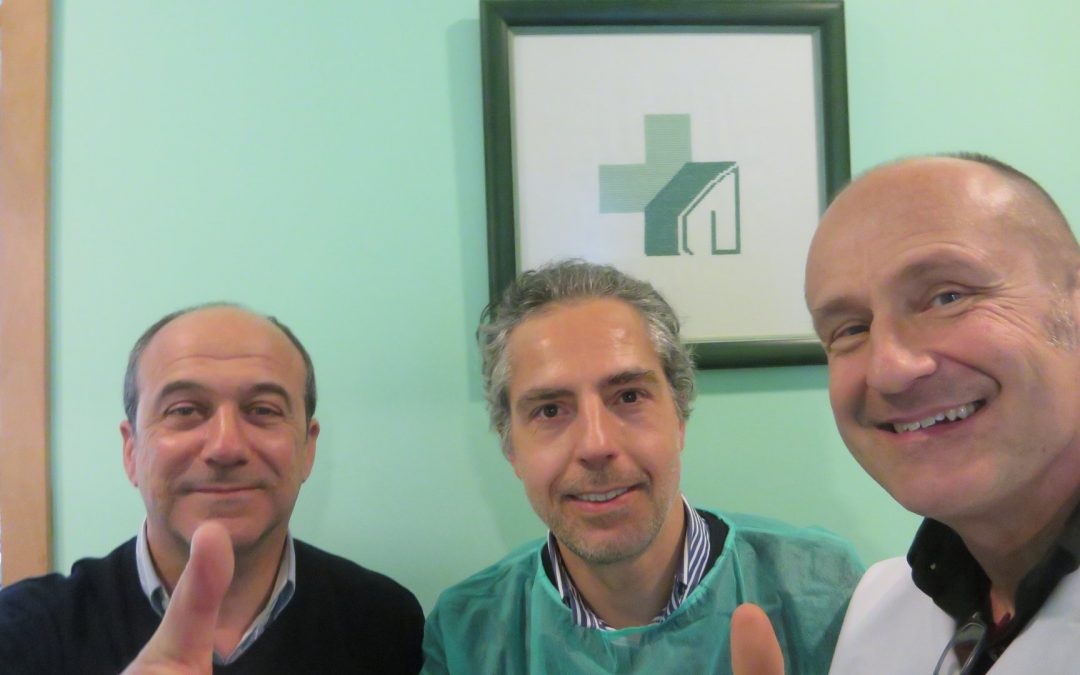What is the current status of new technologies in the surgical phase of dental implantology?
Researchers and clinicians are increasingly aware of the factors that ensure positive treatment outcomes in implant rehabilitation of the dentition. Innovative software merged with cbCT data sets provides the means to plan the position and angulation of virtual implants. 3D printing or milling facilitated the transition from freehand navigation to static surgical guides. While an improvement, static guides are subject to inaccuracy in their production resulting in ill-fitting stents which compromises the surgical procedure. Dynamic Surgical Navigation is widely used in osseous medical procedures. The transition to computer-guided dental surgery provides real-time feedback that facilitates a virtual visualization of the development of the osteotomy.
What advantages does Dynamic Navigation provide the clinician?
Numerous studies have shown that the degree of angulation of implant placement is dramatically reduced by the use of Dynamic Navigation. These studies show that the entry and apex error deviation of static guides differs significantly from the measurements obtained from Dynamic Surgical Navigation.
What is the difference between Dynamic Surgical Navigation and other navigation protocols?
Dynamic Navigation enables the clinician to alter the planned path of the osteotomy during the procedure. Dynamic navigation does not require a library of implants as the virtual implant can be adjusted to any diameter or length commensurate with the fixture to be used. The accuracy of the procedure is a coordination of dentist and software in contrast to cognitive navigation or 3D printed stents subject to production inaccuracy.
While there is a significant financial investment in the acquisition of Dynamic Navigation hardware and software, the extrapolation of the costs over time diminishes in contrast to the increasing costs of the manufacture of static guides.
CBCT acquisition and virtual planning are done at the same appointment unlike static guides which require multiple appointments. Cost effectiveness is measured by increased time efficiency and the lack of materials cost or laboratory charges.
How does the patient benefit? Is the degree of pre-operative and post-operative complications diminished in contrast to other types of surgical protocols?
Dynamic Navigation facilitates flapless surgery which obviates the morbidity issues of procedures require flap exposure of the surgical site. Furthermore, this minimally invasive approach results in lesser complications than non-guided surgery. The clinical, biologic and functional demands of successful rehabilitation are enhanced which promotes more rapid healing.
What is the nature of the training required to perform Dynamic Surgical Navigation?
Training is an inherent requirement of any new technique or equipment. Dynamic Navigation is no different; however, the logical workflow protocol and online support afforded by the companies ensures that the learning curve is not fraught with inconvenient road blocks or complications.
Is Dynamic Navigation the gold standard of implant surgery?
The enhanced accuracy of the real-time feedback provided the clinician is unimpeachable. The experience of its use derived from our medical colleagues in neurosurgery and orthopedic surgery extrapolates to a superior surgical result.
Will Dynamic Navigation be the mainstream surgical approach for implantology?
While some may perceive Dynamic Navigation as costly, procedural and patient centric care are costs that ensure the highest level of clinical excellence. All change comes with a learning curve. Dentistry is experiencing this with the transition from analogue to digital workflow. Amalgam to composite and zirconia restorations, stainless steel files to nickel-titanium instrumentation in endodontics, loupes and surgical operating microscopes are all tranformative. cbCT, virtually planned implant surgery, intra-oral scanners represent seminal changes in the new era of dentistry. Portugal leads the profession in viewing the vistas and horizons that lie ahead.
Is Dynamic Navigation hardware and software evolving?
The technologic advancements and innovation of the Navident system enable the use of high-speed handpieces, piezotomes and trephines for a myriad of surgical procedures. I have had the privilege of being one of the first dentists in the world to use Trace and Place technology which does not require a fiducial. In March, I had the privilege of being the first clinician to do to do piezo-surgery with stentless Dynamic Navigation. It is my privilege to present cases done in my clinic at the first Dynamic Navigation Society Symposium in Rome. It is an honour and a privilege to position Portugal at the forefront of Dynamic Navigation technology. July 5th and 6th of 2019 will herald the beginning of a new era in implant surgery. I take great pride in being among the first of those on the path to the future.

Dr. Ricardo Henriques, Master Clinical Trainer, Portugal
Translated from the original interview in Portuguese. Originally published in O Jornal Dentistry, April 2019. Click here to read original.
